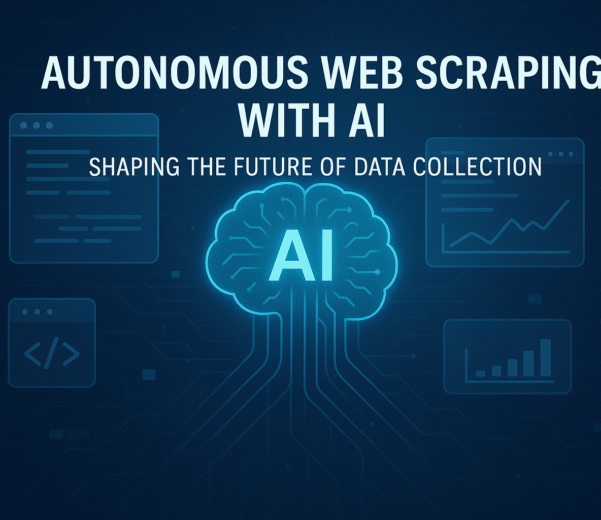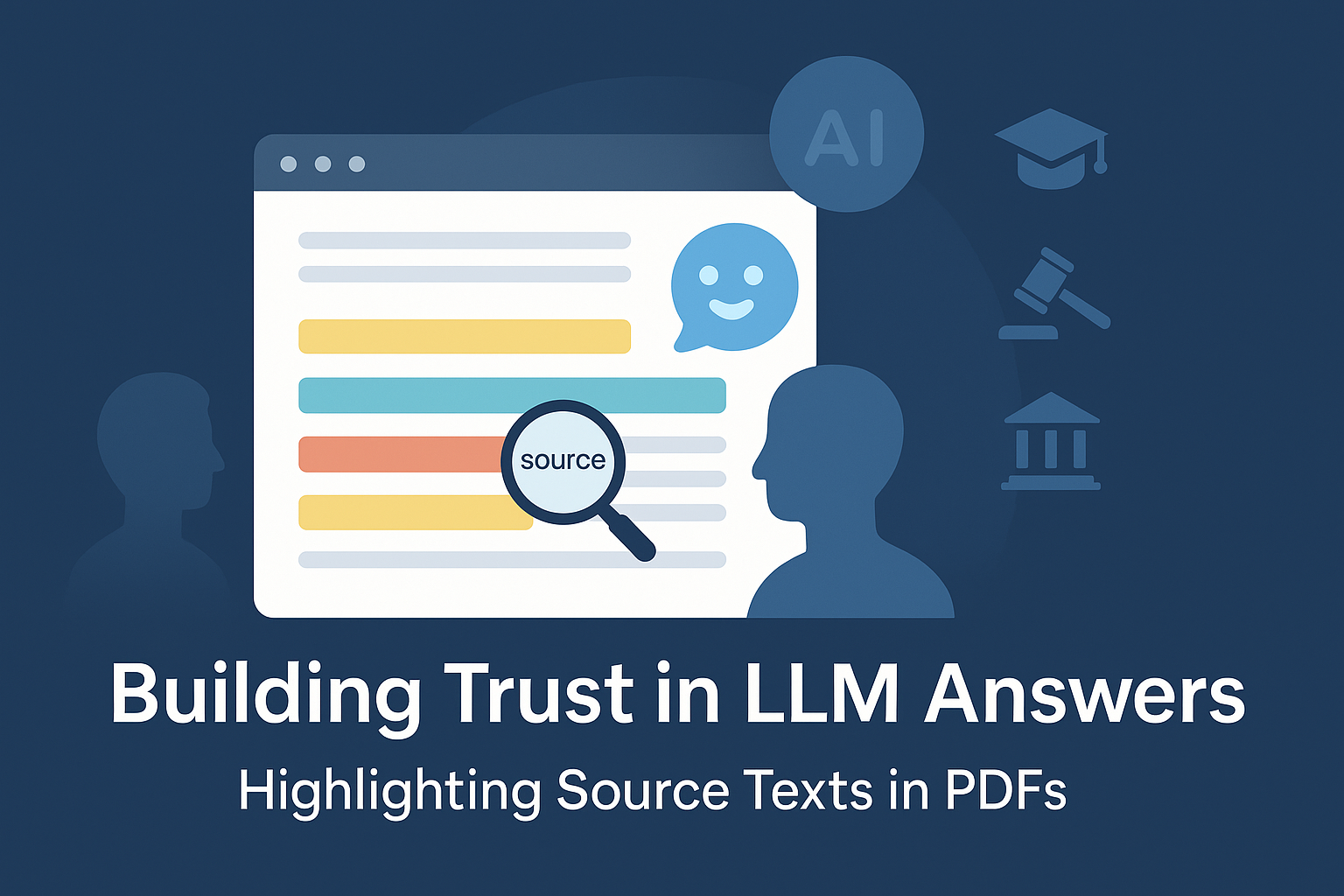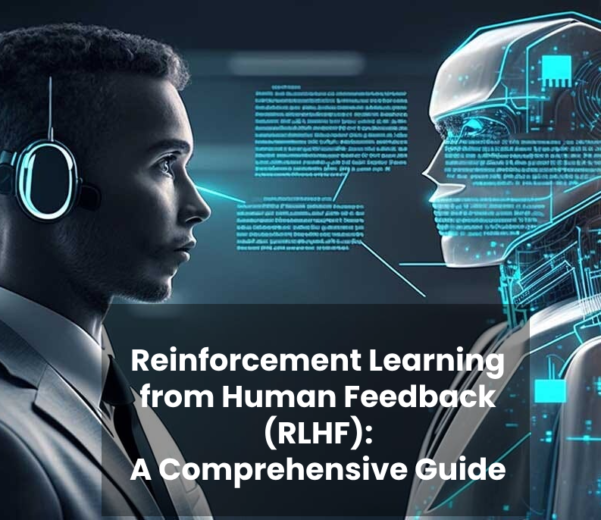Introduction to Data Labeling
In the fast-paced world of artificial intelligence (AI) and machine learning (ML), the quality of data is paramount. The journey from raw data to actionable insights hinges on a process known as data annotation. This detailed guide explores the essential role of data annotation, highlights leading companies in this space, and provides a special focus on SO Development, a standout player in the field.
What is Data Labeling?
Data labeling is the process of annotating or tagging data with informative labels, metadata, or annotations that provide context and meaning to the underlying information. These labels serve as ground truth or reference points for training machine learning models and algorithms. Essentially, data labeling involves assigning labels to data instances to facilitate the learning process of AI systems.
Importance of Data Labeling in Machine Learning and AI
Data labeling is a critical component of machine learning and AI development because it directly impacts the performance, accuracy, and reliability of AI models. High-quality labeled datasets are essential for training algorithms to recognize patterns, make predictions, classify objects, and perform various tasks accurately.
Without properly labeled data, machine learning models may struggle to generalize effectively to new, unseen data, leading to poor performance and unreliable results. Therefore, data labeling plays a fundamental role in bridging the gap between raw data and actionable insights in AI systems.
The Role of Data Labeling in Training Datasets
In the context of supervised learning, where algorithms learn from labeled examples, the quality and relevance of the training data significantly influence the model’s performance. Data labeling helps create annotated datasets that provide the necessary input-output pairs for training algorithms to learn the underlying patterns and relationships within the data.
Training datasets typically consist of a large collection of labeled examples, where each example comprises input features (e.g., images, text, audio) along with corresponding target labels or categories. During the training process, the model iteratively learns from these labeled examples to improve its predictive accuracy and generalization capabilities.
The Data Labeling Process: Overview and Key Components
The data labeling process involves several key steps, each of which contributes to the creation of high-quality labeled datasets:
- Data Preparation: Before labeling can begin, the raw data must be collected, cleaned, and organized in a format suitable for annotation. This may involve data preprocessing tasks such as data cleaning, normalization, and transformation.
- Labeling Task Definition: The labeling task must be clearly defined, specifying the types of annotations or labels required for the dataset. This step involves identifying the target variables, classes, or attributes that the model will learn to predict or classify.
- Annotation Guidelines: Establishing clear annotation guidelines and standards is essential for ensuring consistency and accuracy across labeled data. Annotation guidelines define the criteria for assigning labels, handling ambiguous cases, and resolving disagreements among annotators.
- Annotation Process: The actual labeling of data involves annotators or labelers assigning labels to individual data instances according to the defined guidelines. Depending on the complexity of the task and the nature of the data, labeling may be performed manually, semi-automatically, or through automated methods.
- Quality Control and Assurance: Quality control measures are implemented to verify the accuracy and reliability of the labeled data. This may include reviewing a sample of annotated examples, conducting inter-annotator agreement tests, and providing feedback to annotators for improvement.
- Iterative Refinement: The labeling process is often iterative, with multiple rounds of annotation and feedback to continuously improve the quality of the dataset. Iterative refinement helps address any inconsistencies, errors, or ambiguities in the labeled data.
- Dataset Validation: Once the labeling process is complete, the labeled dataset undergoes validation to ensure that it meets the required quality standards and specifications. Validation involves evaluating the performance of machine learning models trained on the labeled data and making any necessary adjustments or corrections.
By following these key steps, organizations can effectively navigate the data labeling process and produce high-quality labeled datasets to support their machine learning and AI initiatives.
Types of Data Labeling
Data labeling encompasses a wide range of tasks and techniques, each tailored to the specific requirements of different data types and applications. Some of the most common types of data labeling include:
Image Labeling
Image labeling involves annotating visual data, such as photographs, digital images, or medical scans, with descriptive labels or bounding boxes that identify objects, regions of interest, or semantic features within the images. Image labeling is widely used in computer vision applications, including object detection, image classification, and facial recognition.

Text Labeling
Text labeling involves annotating textual data, such as documents, articles, or social media posts, with labels or tags that represent categories, sentiments, entities, or other linguistic features. Text labeling tasks may include sentiment analysis, named entity recognition, text classification, and topic modeling.

Video Labeling
Video labeling involves annotating video data, such as surveillance footage, movie clips, or video streams, with temporal annotations, object trajectories, or event labels that describe the content and context of the videos. Video labeling tasks may include action recognition, activity detection, and object tracking.

Audio Labeling
Audio labeling involves annotating audio data, such as speech recordings, music tracks, or sound effects, with labels or tags that describe the acoustic properties, linguistic content, or semantic meaning of the audio signals. Audio labeling tasks may include speech recognition, speaker diarization, and sound event detection.

Sensor Data Labeling
Sensor data labeling involves annotating data collected from various sensors, such as accelerometers, gyroscopes, GPS receivers, or environmental sensors, with labels or annotations that capture the physical, environmental, or contextual information captured by the sensors. Sensor data labeling tasks may include activity recognition, localization, and environmental monitoring.

Other Specialized Data Labeling Tasks
In addition to the above types, data labeling may encompass a wide range of specialized tasks tailored to specific data modalities, applications, or domains. For example:
- Geospatial data labeling involves annotating geographic data, such as maps, satellite images, or GIS datasets, with spatial features, landmarks, or land cover classes.
- Biomedical data labeling involves annotating medical imaging data, genomics data, or electronic health records with clinical diagnoses, anatomical structures, or biomarkers.
- Financial data labeling involves annotating financial transactions, market data, or economic indicators with labels or tags that represent transaction types, market trends, or risk factors.
Data Labeling Techniques
Data labeling techniques encompass a variety of methods and approaches for annotating data with informative labels or annotations. These techniques range from manual labeling by human annotators to semi-automated and fully automated labeling using machine learning algorithms. The choice of labeling technique depends on factors such as the complexity of the labeling task, the availability of labeled data, and the desired balance between annotation quality, speed, and cost.
Manual Labeling
Manual labeling involves human annotators manually inspecting and annotating individual data instances based on predefined labeling guidelines or criteria. Manual labeling offers the highest level of annotation accuracy and control, as human annotators can apply domain knowledge, context, and intuition to accurately label complex or ambiguous data. However, manual labeling can be time-consuming, labor-intensive, and costly, especially for large-scale datasets or complex labeling tasks.
Semi-Automated Labeling
Semi-automated labeling combines human expertise with machine assistance to accelerate the labeling process while maintaining annotation quality. In semi-automated labeling, machine learning algorithms or AI tools assist human annotators by suggesting or pre-labeling data instances based on patterns, features, or heuristics learned from previously labeled data. Human annotators review and refine the suggested labels, providing feedback to improve the performance of the labeling system over time. Semi-automated labeling helps reduce the annotation burden on human annotators, increase labeling efficiency, and scale to larger datasets or more complex labeling tasks. However, semi-automated labeling still requires human oversight to ensure the accuracy and correctness of the annotated data.
Automated Labeling
Automated labeling, also known as machine-generated labeling, leverages machine learning models or algorithms to automatically annotate data without human intervention. Automated labeling techniques vary depending on the data type and task but may include techniques such as rule-based annotation, pattern recognition, or machine learning-based classification. Automated labeling offers significant advantages in terms of scalability, speed, and cost-efficiency, as it can process large volumes of data rapidly with minimal human involvement. However, automated labeling may be limited by the quality of the underlying algorithms, the complexity of the labeling task, and the availability of labeled training data for model training.
Crowd Labeling
Crowd labeling, also known as crowdsourced labeling, involves outsourcing data annotation tasks to a distributed workforce of human annotators, often referred to as “crowdworkers” or “micro-workers.” Crowd labeling platforms such as Amazon Mechanical Turk, CrowdFlower (now Figure Eight), and Labelbox enable organizations to crowdsource labeling tasks to a global pool of workers, who annotate data remotely through online interfaces. Crowd labeling offers advantages in terms of scalability, cost-effectiveness, and diversity of annotations, as it can leverage the collective intelligence and diversity of the crowd to annotate large datasets quickly. However, crowd labeling may pose challenges in terms of annotation quality, consistency, and reliability, as annotations are generated by individuals with varying levels of expertise and attention to detail.
Active Learning and its Role in Data Labeling
Active learning is a machine learning technique that optimizes the labeling process by selectively choosing the most informative or uncertain data instances for annotation. Instead of randomly sampling data for labeling, active learning algorithms iteratively select data instances that are expected to provide the greatest improvement in model performance when labeled. Active learning algorithms typically use uncertainty measures, such as entropy or margin-based sampling, to identify data instances that are difficult or ambiguous for the current model to classify. By focusing labeling efforts on these informative data instances, active learning can achieve higher annotation efficiency and reduce the overall labeling cost.
Transfer Learning for Data Labeling Efficiency
Transfer learning is a machine learning technique that enables models trained on one task or domain to be adapted or transferred to perform related tasks or domains with minimal additional labeling effort. In the context of data labeling, transfer learning can be used to leverage pre-trained models or features learned from large, labeled datasets in one domain and transfer this knowledge to annotate data in a related domain with fewer labeled examples. Transfer learning can accelerate the labeling process, reduce the annotation burden on human annotators, and improve the performance of machine learning models, especially in scenarios where labeled data is scarce or expensive to obtain.
Overall, data labeling techniques encompass a spectrum of approaches, ranging from manual annotation by human experts to automated methods leveraging machine learning and crowdsourcing. The choice of labeling technique depends on factors such as the complexity of the labeling task, the availability of labeled data, and the desired balance between annotation quality, speed, and cost. By leveraging a combination of these techniques, organizations can effectively annotate data to train machine-learning models and unlock valuable insights from their data assets.
Best Practices in Data Labeling
Effective data labeling is essential for generating high-quality labeled datasets that enable the development of accurate and reliable machine learning models. Adopting best practices in data labeling can help organizations streamline the labeling process, improve annotation quality, and maximize the value of labeled data for AI development. Some key best practices in data labeling include:
Establishing Labeling Guidelines and Standards
Clear and comprehensive annotation guidelines are essential for ensuring consistency and accuracy across labeled datasets. Annotation guidelines should define the labeling task, specify the types of annotations or labels required, and provide detailed instructions for annotators. Additionally, establishing standards for data formatting, annotation conventions, and quality metrics can help maintain annotation consistency and facilitate collaboration among annotators.
Quality Assurance and Verification Processes
Implementing robust quality assurance (QA) and verification processes is crucial to validate the accuracy and reliability of labeled data. QA measures such as double annotation, inter-annotator agreement analysis, and quality control checks help identify annotation errors, inconsistencies, or biases early in the labeling process. Verification mechanisms such as spot-checking, blind testing, and expert review can further validate the quality of labeled datasets and ensure compliance with annotation guidelines.
Leveraging Domain Expertise
Incorporating domain expertise into the labeling process is essential for accurately annotating domain-specific data and capturing nuanced contextual information. Domain experts can provide valuable insights, domain knowledge, and subject matter expertise to guide annotators, resolve ambiguous cases, and ensure the relevance and correctness of labeled data. Collaborating with domain experts, stakeholders, and end-users throughout the labeling process can enhance the quality and relevance of labeled datasets for specific applications.
Iterative Labeling Processes
Iterative refinement of labeled datasets is essential for continuously improving annotation quality and addressing any inconsistencies or errors. Iterative labeling processes involve multiple rounds of annotation, feedback, and revision to refine annotation guidelines, resolve discrepancies, and enhance the overall quality of labeled data. By iteratively reviewing and refining annotations, organizations can progressively improve the accuracy, completeness, and relevance of labeled datasets over time.
Collaboration and Communication Among Labeling Teams
Effective collaboration and communication among labeling teams are critical for coordinating labeling efforts, sharing best practices, and resolving annotation-related challenges. Establishing clear channels of communication, providing training and support to annotators, and fostering a collaborative culture can enhance teamwork, knowledge sharing, and problem-solving capabilities within labeling teams. Additionally, leveraging collaboration tools, project management platforms, and version control systems can streamline communication and coordination among distributed labeling teams.
Using Tools and Platforms for Efficient Labeling
Utilizing specialized tools and platforms designed for data labeling can streamline the annotation process, improve productivity, and enhance annotation quality. Data labeling tools offer features such as annotation interfaces, labeling workflows, version control, and integration with machine learning frameworks, enabling annotators to annotate data efficiently while adhering to annotation guidelines. Leveraging labeling platforms with built-in automation, collaboration, and quality control capabilities can further optimize the labeling process and accelerate the generation of high-quality labeled datasets.
By implementing these best practices, organizations can establish robust data labeling processes that ensure the accuracy, consistency, and relevance of labeled datasets for machine learning and AI development. Effective data labeling practices are essential for maximizing the performance and reliability of machine learning models and unlocking actionable insights from labeled data assets.
Data Labeling in Various Industries
Data labeling plays a crucial role in a wide range of industries and applications, enabling organizations to leverage labeled data for machine learning, AI development, and data-driven decision-making. From healthcare and autonomous vehicles to e-commerce and finance, data labeling has diverse applications across various sectors. Some of the key industries where data labeling is applied include:
Healthcare and Medical Imaging
In healthcare, data labeling is essential for annotating medical images, diagnostic reports, electronic health records, and other healthcare data sources. Labeled medical imaging data, such as X-rays, MRIs, CT scans, and histopathology slides, enable the development of AI-powered medical diagnosis and treatment systems. Data labeling techniques such as image segmentation, lesion detection, and anatomical landmark localization help identify abnormalities, classify diseases, and assist healthcare professionals in making accurate diagnoses. By leveraging labeled medical data, organizations can enhance patient care, improve clinical outcomes, and accelerate medical research and innovation.

Autonomous Vehicles and Transportation
In the field of autonomous vehicles and transportation, data labeling is critical for training AI models to perceive and understand the surrounding environment, detect objects, and make real-time driving decisions. Labeled sensor data from cameras, LiDAR, radar, and other onboard sensors enable autonomous vehicles to navigate safely, detect obstacles, and avoid collisions on the road. Data labeling tasks such as object detection, lane segmentation, and scene understanding play a crucial role in developing advanced driver assistance systems (ADAS) and autonomous driving technologies. By annotating large-scale datasets of real-world driving scenarios, organizations can enhance the safety, reliability, and performance of autonomous vehicles, paving the way for the future of transportation.

E-commerce and Retail
In e-commerce and retail, data labeling is used to annotate product images, descriptions, customer reviews, and other product-related data to improve product search, recommendation systems, and personalized shopping experiences. Labeled product data enables e-commerce platforms to classify products, extract product attributes, and generate product recommendations based on user preferences and behavior. Data labeling techniques such as image classification, product categorization, and sentiment analysis help e-commerce companies enhance product discovery, increase sales, and optimize marketing strategies. By leveraging labeled product data, organizations can deliver relevant, personalized shopping experiences to customers and drive business growth in the competitive e-commerce market.

Finance and Banking
In finance and banking, data labeling is employed to annotate financial transactions, market data, customer interactions, and other financial data sources to detect fraud, assess risk, and make data-driven investment decisions. Labeled financial data enables organizations to identify fraudulent activities, predict market trends, and optimize trading strategies using AI-powered analytics and machine learning models. Data labeling tasks such as transaction classification, anomaly detection, and sentiment analysis help financial institutions mitigate risks, improve compliance, and enhance customer satisfaction. By leveraging labeled financial data, organizations can gain valuable insights, mitigate financial risks, and drive innovation in the financial services industry.

Agriculture and Environmental Monitoring
In agriculture and environmental monitoring, data labeling is utilized to annotate satellite imagery, weather data, soil samples, and crop health indicators to optimize agricultural practices, monitor environmental changes, and ensure sustainable resource management. Labeled agricultural data enables farmers, agronomists, and environmental scientists to assess crop health, predict yields, and detect environmental hazards using AI-driven analytics and remote sensing technologies. Data labeling techniques such as crop classification, land cover mapping, and pest detection help improve agricultural productivity, conserve natural resources, and mitigate the impact of climate change on food security. By leveraging labeled agricultural and environmental data, organizations can promote sustainable farming practices, preserve biodiversity, and address global challenges in food production and environmental conservation.

Gaming and Entertainment
In the gaming and entertainment industry, data labeling is employed to annotate gameplay footage, user interactions, audiovisual content, and player behaviors to enhance gaming experiences, personalize content recommendations, and optimize game design. Labeled gaming data enables game developers, publishers, and content creators to understand player preferences, analyze gameplay patterns, and deliver engaging, immersive experiences to players. Data labeling tasks such as player segmentation, emotion recognition, and content tagging help optimize game mechanics, tailor content recommendations, and improve player engagement and retention. By leveraging labeled gaming data, organizations can innovate in game development, create compelling entertainment experiences, and build loyal communities of players.

Social Media and Content Moderation
In social media and content moderation, data labeling is utilized to annotate user-generated content, comments, images, and videos to detect inappropriate or harmful content, enforce community guidelines, and protect users from online abuse and harassment. Labeled social media data enables platform operators, moderators, and content reviewers to identify and remove offensive, spammy, or abusive content using AI-powered content moderation tools and algorithms. Data labeling tasks such as content classification, sentiment analysis, and toxicity detection help maintain a safe, inclusive online environment, foster healthy discussions, and uphold community standards on social media platforms. By leveraging labeled social media data, organizations can promote digital safety, combat online harassment, and build trust and credibility with users.

Overall, data labeling plays a pivotal role in various industries and applications, empowering organizations to harness the power of labeled data for machine learning, AI development, and data-driven decision-making.
The Future of Data Labeling
As technology advances and the demand for AI-driven solutions continues to grow, the future of data labeling holds tremendous promise and potential for innovation. Several key trends and developments are shaping the future of data labeling, including:
Advancements in Labeling Technologies
Advances in machine learning, computer vision, and natural language processing are driving the development of new labeling technologies and tools that streamline the annotation process, improve annotation quality, and enable more efficient data labeling at scale. Innovations such as active learning, self-supervised learning, and weak supervision are enhancing the capabilities of data labeling systems by reducing the need for manual intervention and leveraging unlabeled data to improve annotation accuracy.
Integration of AI in Data Labeling Processes
The integration of AI technologies such as computer vision, speech recognition, and natural language understanding is revolutionizing data labeling processes by automating repetitive tasks, predicting labels, and assisting human annotators in real-time. AI-powered labeling platforms and tools leverage machine learning algorithms to automatically annotate data, suggest labels, and provide feedback to annotators, enabling faster, more accurate labeling of large-scale datasets.
Addressing Ethical and Regulatory Challenges
Growing concerns about data privacy, bias, and fairness are driving efforts to address ethical and regulatory challenges in data labeling. Organizations are implementing ethical guidelines, bias mitigation strategies, and privacy-preserving techniques to ensure that data labeling practices comply with legal and ethical standards and protect the rights and privacy of individuals represented in the labeled datasets.
The Role of Data Labeling in Democratizing AI
Data labeling is playing a crucial role in democratizing AI by making machine learning accessible to a wider range of users and organizations. Cloud-based labeling platforms, open-source labeling tools, and community-driven labeling initiatives are lowering the barriers to entry for AI development and enabling individuals, startups, and enterprises to create AI-powered solutions using labeled data.
Emerging Trends and Opportunities in Data Labeling
Several emerging trends and opportunities are reshaping the landscape of data labeling, including:
- Multi-modal Data Labeling: With the proliferation of multi-modal data sources such as images, text, audio, and sensor data, there is a growing demand for techniques and tools that support the labeling of diverse data types and modalities.
- Federated Learning and Edge Labeling: Federated learning and edge computing are enabling distributed data labeling and model training on edge devices, allowing organizations to leverage local data sources and privacy-sensitive data for labeling and model development.
- Labeling for Continual Learning: As AI models evolve and adapt to changing environments, there is a need for continual labeling processes that support ongoing model updates, retraining, and adaptation to new data distributions and scenarios.
Overall, the future of data labeling is characterized by innovation, collaboration, and adaptation to evolving technologies and challenges. By embracing emerging trends, leveraging advanced technologies, and adopting best practices in data labeling, organizations can unlock the full potential of labeled data to drive innovation, solve complex problems, and create value in the AI-driven economy.
Case Studies and Success Stories
Real-world case studies and success stories demonstrate the impact and value of data labeling in various industries and applications. By highlighting successful implementations of data labeling techniques and strategies, organizations can learn from best practices, gain insights into effective approaches, and understand the tangible benefits of labeled data for AI development. Some illustrative case studies and success stories include:
Case Study 1: Improving Autonomous Driving with High-Quality Labeled Data
A leading autonomous vehicle company used high-quality labeled data to train machine learning models for object detection, lane segmentation, and scene understanding. By annotating large-scale datasets of real-world driving scenarios, the company achieved significant improvements in the performance and reliability of its autonomous driving system, enabling safer and more efficient navigation on the road.
Case Study 2: Enhancing Medical Diagnosis through Accurate Data Labeling
A healthcare organization leveraged labeled medical imaging data to develop AI-powered diagnostic tools for detecting diseases such as cancer, cardiovascular disorders, and neurological conditions. By annotating medical images with expertly curated labels, the organization improved the accuracy and speed of disease diagnosis, leading to better patient outcomes and reduced healthcare costs.
Case Study 3: Optimizing E-commerce Recommendations with Richly Annotated Data
An e-commerce retailer used labeled product data to enhance its recommendation engine and personalize product recommendations for customers. By annotating product images, descriptions, and customer reviews with detailed labels and attributes, the retailer improved the relevance and effectiveness of its recommendation algorithms, driving higher conversion rates and customer satisfaction.
Case Study 4: Transforming Agriculture with Precision Data Labeling Techniques
An agricultural technology startup employed precision data labeling techniques to analyze satellite imagery and monitor crop health, soil moisture levels, and environmental conditions. By annotating satellite images with accurate labels and annotations, the startup enabled farmers to optimize irrigation, fertilizer application, and pest control strategies, leading to higher crop yields and sustainable farming practices.
These case studies illustrate the diverse applications and transformative impact of data labeling across industries, from autonomous vehicles and healthcare to e-commerce and agriculture. By leveraging labeled data and adopting best practices in data labeling, organizations can drive innovation, solve complex challenges, and unlock new opportunities for growth and success.
Conclusion
In conclusion, data labeling plays a central role in machine learning and AI development, enabling organizations to transform raw data into actionable insights, predictive models, and intelligent applications. By annotating data with informative labels, metadata, or annotations, organizations can train machine learning models to recognize patterns, make predictions, and perform complex tasks with accuracy and reliability.
Throughout this guide, we have explored the importance of data labeling, the various types and techniques of data labeling, key challenges and best practices, industry applications, emerging trends, and real-world case studies. From healthcare and autonomous vehicles to e-commerce and social media, data labeling has diverse applications across industries and domains, driving innovation, solving complex problems, and creating value in the AI-driven economy.
As technology continues to evolve and the demand for AI-driven solutions grows, the future of data labeling holds tremendous promise and opportunity for innovation. By embracing emerging trends, leveraging advanced technologies, and adopting best practices in data labeling, organizations can unlock the full potential of labeled data to drive innovation, solve complex challenges, and create value in the digital age.
Thank you for reading “Your Guide to Data Labeling.” We hope this comprehensive guide has provided you with valuable insights, practical tips, and inspiration to harness the power of labeled data for machine learning and AI development. Whether you’re a data scientist, AI researcher, business leader, or enthusiast, we invite you to explore the exciting world of data labeling and embark on a journey of discovery and innovation in the field of artificial intelligence.










